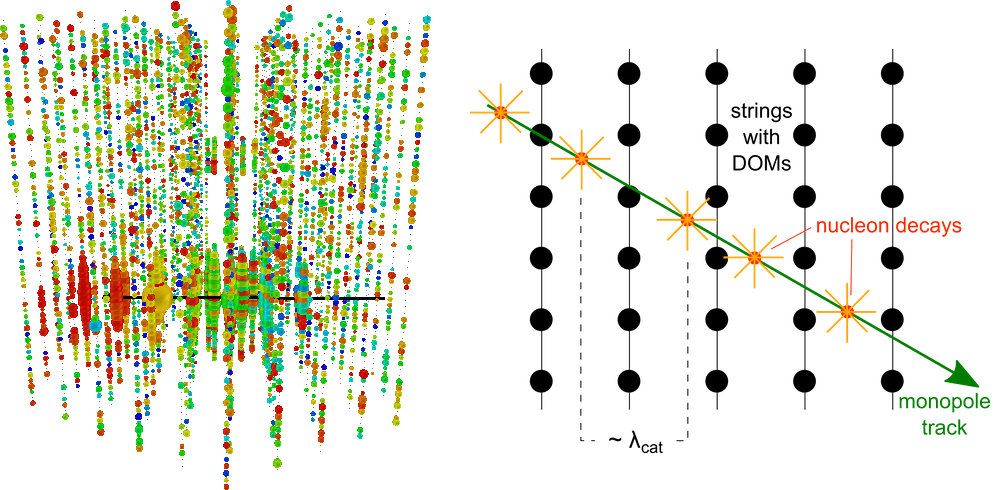Magnetic monopoles were predicted by Paul Dirac in 1931. Their existence would imply the quantization of magnetic and electric charges and, thus, symmetrize Maxwell’s equations with respect to the sources of the electromagnetic field. Today, these equations allow magnetic charges to exist only in pairs (north and south) while positive and negative electric charges can exist independently.
Relic monopoles are believed to exist as remnants of the very early universe, as predicted by Grand Unified Theories (GUTs), where they appear as stable, finite energy solutions of the field equations, i.e., as elementary particles. IceCube, being a very large detector, turns out to be a great experiment to search for monopoles. In a new paper submitted to The European Physical Journal C, the IceCube Collaboration presents a search for non-relativistic (slow) magnetic monopoles that, despite being fruitless, has set the best experimental limits for a wide range of assumed speeds and catalysis cross sections.

Depending on their speed, monopoles will have different interaction signatures in IceCube. A non-relativistic monopole is assumed to catalyze the decay of nucleons along its track in the detector medium. Thus, the signature in IceCube will be the appearance of cascades along a track with typical distances dependent on the catalysis cross section. (Fig. 2).
The current search used two different data samples. Data taken from May 2011 to May 2012 was analyzed using a dedicated slow-particle trigger, at this point applied only to the DeepCore subdetector, to search for a wide range of non-relativistic monopoles, while data taken from May 2009 to May 2010 with standard IceCube-triggers only allowed a search for the brightest monopoles. Since May 2012, the slow-particle trigger has been applied to the full detector and will provide improved sensitivity for further searches in IceCube.
“No monopole signal was observed in either analysis, yet the results constrain the flux of non-relativistic magnetic monopoles by more than one order of magnitude compared to previous experiments,” explains Mohamed Lotfi Benabderrahmane, an Icecube researcher at DESY.
The search presented in this paper targets mostly very heavy monopoles, which cannot achieve relativistic speeds. “With the null detection, we now close the window on a connection between such hypothetical monopoles and dark matter. The resulting constraints on the flux are so low that monopoles cannot constitute the dominant amount of dark matter in the universe,” says Sebastian Schoenen, an IceCube researcher at RWTH Aachen University. Following these results, only monopoles with a mass larger than the so-called Planck mass could be responsible for a large fraction of dark matter, but this mass is above the scale predicted by GUT theories.
This new research is complementary to a previous IceCube search targeting relativistic monopoles. These monopoles have speeds above the Cherenkov light threshold and will directly produce copious amounts of blue light in IceCube, generating a signature that will also look much more like a typical atmospheric muon. However, monopole tracks are expected to be brighter than those of muons. The first searches for relativistic monopoles were published in January 2013, and the collaboration is now working on improved searches.
Info “Search for non-relativistic Magnetic Monopoles with IceCube,” IceCube Collaboration: M.G. Aartsen et al. The European Physical Journal C74 (2014) 7, arXiv.org:1402.3460